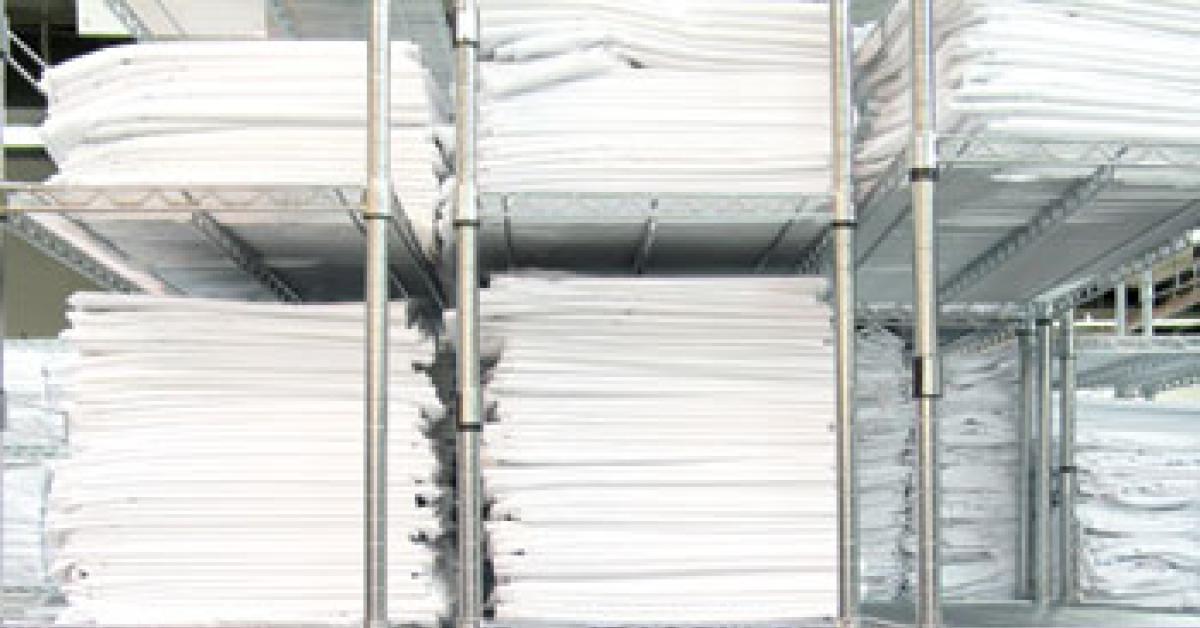CHICAGO — Today’s rising price of cotton is making healthcare textiles more valuable—and more costly to replace—heightening the importance of storing them securely.More than one-third of managers polled in a recent American Laundry News Wire survey say they have increased security of their linen/garment inventories because of higher cotton prices.While bed linen may often disappear from hospital premises during patient transfers, scrubs are probably the most common linen item that leaves a hospital, says Janice Larson, managing director of Cost Management Services for Encompass Textiles and Interiors.Theft occurs when a person removes linen from the hospital for personal use or resale, knowing that doing so is not acceptable, she says. Inadvertent theft occurs most often when patients take linen home because they think it is allowable.Establishing internal policies regarding unauthorized usage or threatening to prosecute individuals for theft can help to deter pilferage, but there are some physical tools that can go a step further and restrict access, such as lockable carts, scrub/garment dispensers and facility security systems.CARTS AND TRUCKSLockable laundry carts and trucks offer laundry and linen managers the capability to deliver clean linen to their end-users while also supplying secure storage when needed.Dan Moss, president of M.I.T. Poly-Cart Corp., says his company pioneered creation of the roll-top security truck some 30 years ago. The linen-exchange cart features a self-storing roll-top door that fully covers clean linen when closed and has a rugged steel hasp that can be locked tight.“It meets an important need for controlling inventory,” Moss says. “If carts are standing on a hospital floor, they are generally left open and there is really very little control over access.”It’s preferred that open-air carts be delivered to a secure area such as a lockable utility room near a nurses’ station, says Barbara Williams, operations manager of consultative services for Standard Textile and an expert in linen inventorying.“Clean linen can be lost very quickly off a floor, especially when it’s close to an exit or a dock,” she adds.GARMENT/LINEN DISPENSERSThe emergency department experiences the most significant linen loss of any hospital department. It’s not unusual for emergency medical technicians delivering patients to the ER to restock their ambulances with hospital linen, for example.Automated dispensers can be programmed to supply only authorized users with the scrubs or linens they are entitled to, preventing theft by unauthorized users and hoarding by authorized users.FACILITY SECURITYFloor closets, which are commonly found in healthcare facilities where distribution space is limited, are stationary sites with shelves that are filled to pre-established levels. While they are less accessible to the public, they make it easier for staff to hoard linen, Williams says.Video surveillance systems can be quite economical, says Jim Mitchell, principal technical support specialist for Ecolab.“If one engages in theft or is considering it, being aware that a camera is pointed in their direction while they work can be quite intimidating,” Mitchell says. “As long as your surveillance system covers (or appears to cover) all areas of your operation, including outside areas, theft can be curtailed.”For those areas where video surveillance may not be possible, keep them locked if you suspect they present a security risk, he adds.“Video surveillance systems can be deactivated one way or another. A lock-and-key system will only help add additional protection. One word of advice: Use locks with keys that can’t be duplicated.”
Have a question or comment? E-mail our editor Matt Poe at [email protected].

